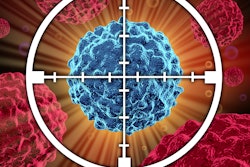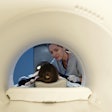More people in the U.S. are living with a history of cancer, with the number projected to surpass 22 million by 2035, and the largest increase among female breast cancer survivors, according to a report released May 30 by the American Cancer Society (ACS).
"Cancer Treatment and Survivorship Statistics, 2025" details projections over the next decade for the 10 most common cancers, starting from an overall cancer prevalence of 18.6 million as of January 2025 and fast-forwarding to January 2035.
Published in CA: A Cancer Journal for Clinicians, the report refers to "cancer survivor" as any person who has been diagnosed with cancer -- although not all people with a history of cancer identify as survivors -- and "cancer prevalence" as the number of people with a history of cancer.
It found that breast cancer in women is the most diagnosed cancer, and projected that the number of women with a previous diagnosis of invasive breast cancer will increase by 23% to about 5.3 million by January 2035. Data also indicate that lung cancer prevalence for men and women is projected to increase by 27% and 29%, respectively.
The document attributes better breast cancer survival rates to advances in hormonal treatments and earlier detection through increased mammography screening and awareness in general. As for lung cancer, advances in early detection and treatment have nearly doubled the five-year relative survival rate since the mid-1990s, from 15% for patients diagnosed during between 1995 and 1997 to 27% in contemporary population-based data, the authors noted. However, many survivors of lung cancer have impaired pulmonary function before treatment, which can be exacerbated by surgery and/or radiation.
 Estimated numbers of survivors of cancer in the U.S. by state as of January 1, 2025. ACS
Estimated numbers of survivors of cancer in the U.S. by state as of January 1, 2025. ACS
"Many survivors cope with critical issues, such as long-term effects of treatment, financial hardship, and fear of recurrence," said Nikita Sandeep Wagle, PhD, in an ACS statement. Wagle is lead author of the report and principal scientist for cancer surveillance research at the ACS. "It’s vital we recognize and respond to these needs in an equitable manner."
The study was developed in collaboration with the U.S. National Cancer Institute (NCI) and analyzed data from several cancer registries and sources. Also, cancer treatment patterns were presented from the National Cancer Database, along with a brief overview of treatment‐related side effects. Cancer treatment modalities assessed in the report include surgery, radiation therapy, and systemic therapy (i.e., chemotherapy, targeted therapy, hormonal therapy, and immunotherapy).
Nearly four out of five (79%) cancer survivors were aged 60 and older, the investigators noted, pointing out threats and disparities such as access to high‐quality care and treatment differences along racial lines and among the uninsured. They also noted differences in treatment for many common cancers, including lung and colorectal. For example, Black people with stage I to II lung cancer were less likely to undergo surgery than their white counterparts (47% versus 52%), the society said.
Nearly 170,000 survivors of breast cancer are projected to be living with metastatic disease in 2035, just under two-thirds of whom will have been initially diagnosed with early-stage cancer. Seven percent of these will be younger than 50 years old, according to the report authors.
Read the full study here.




















